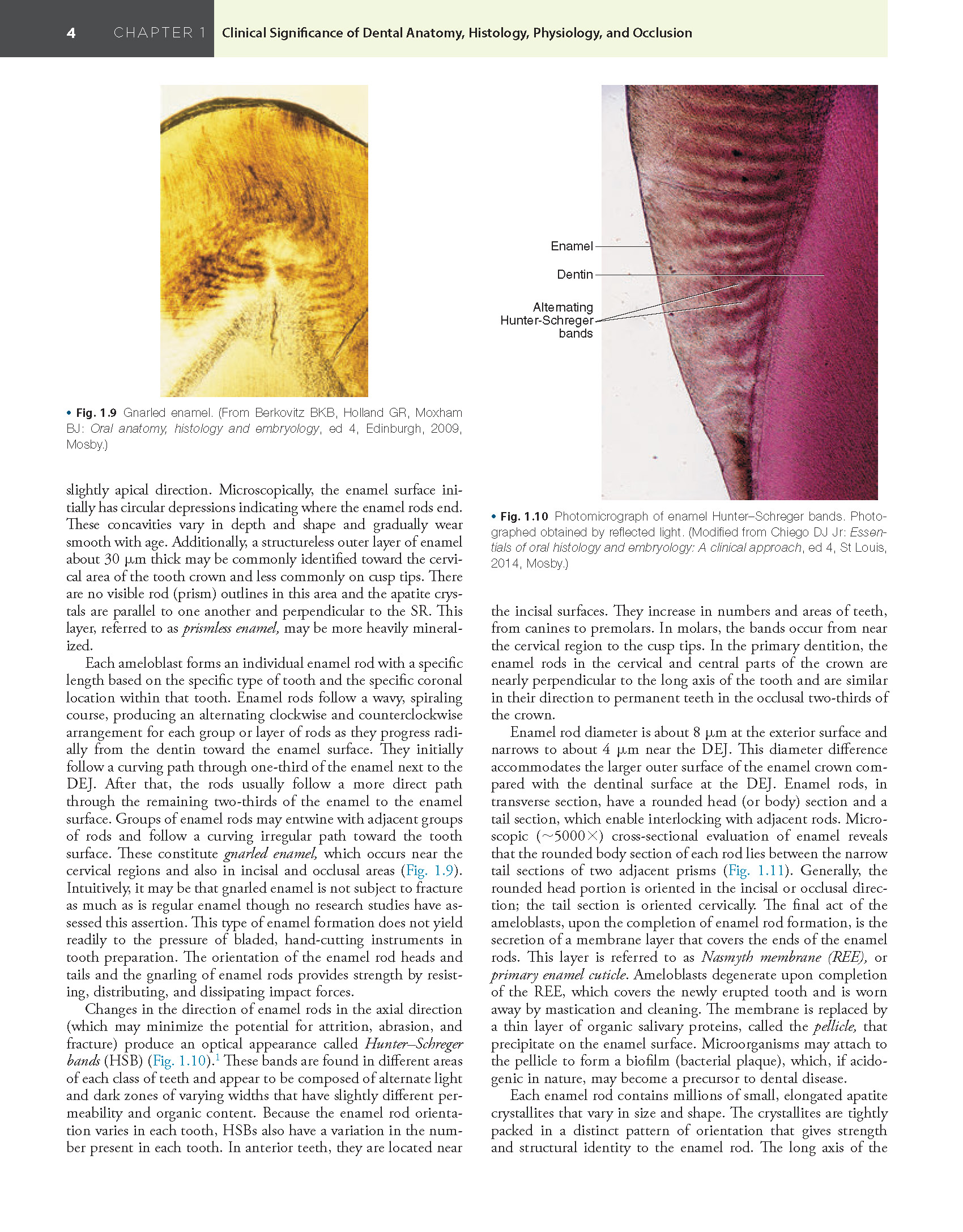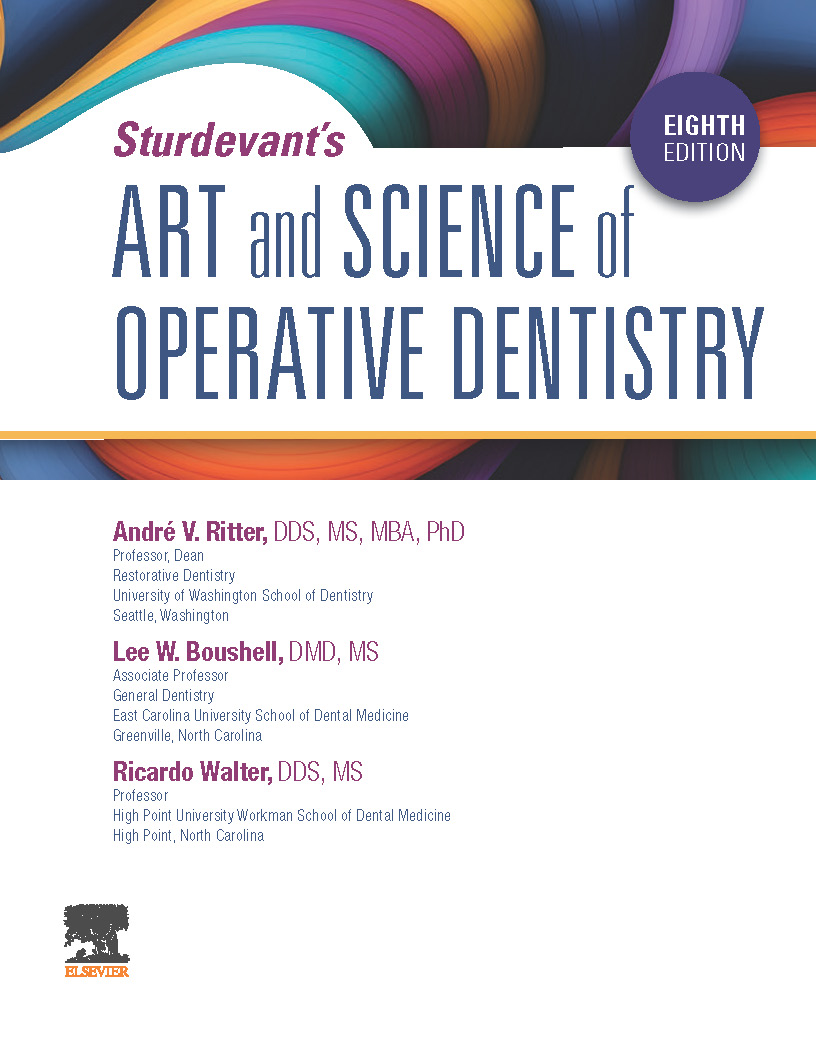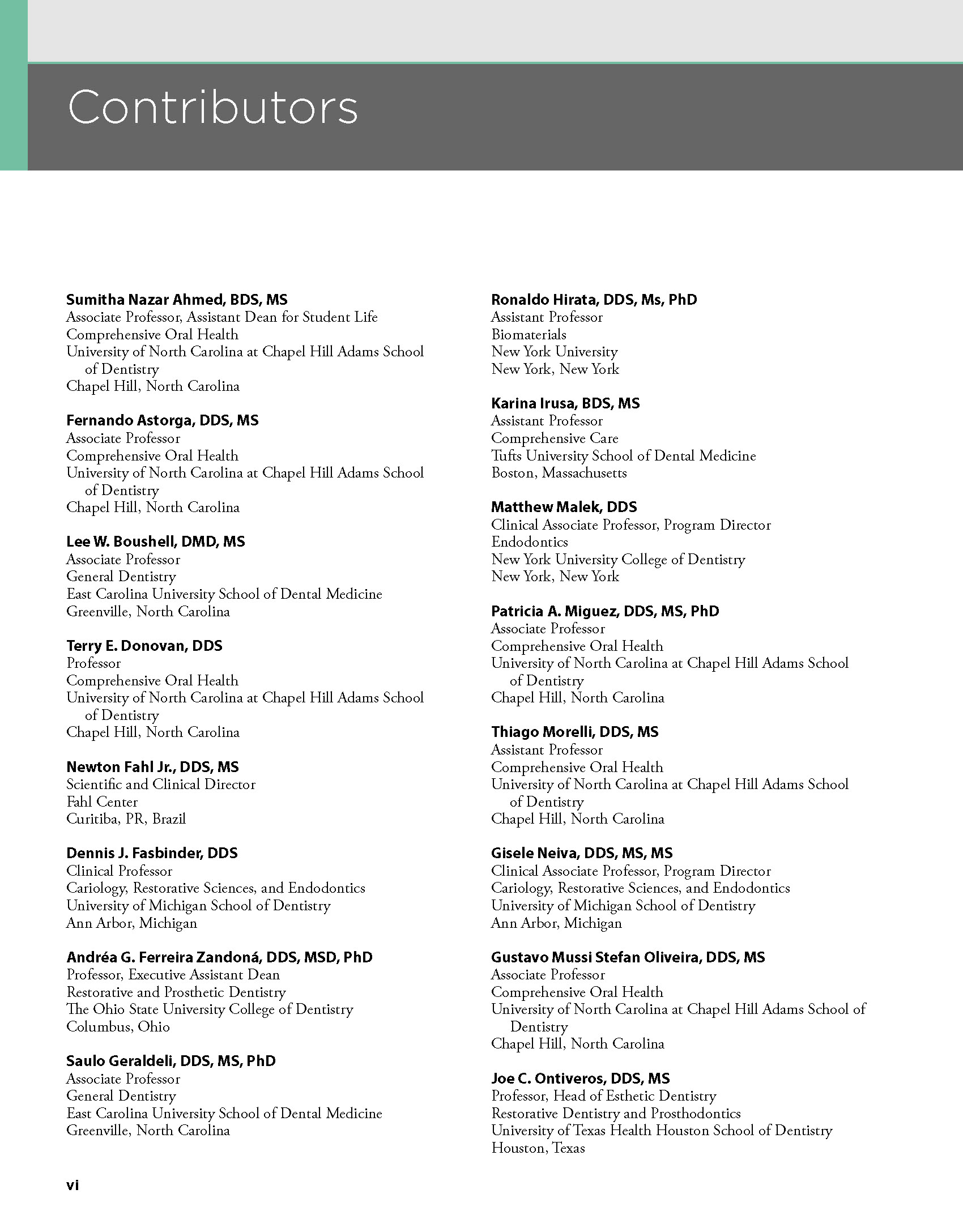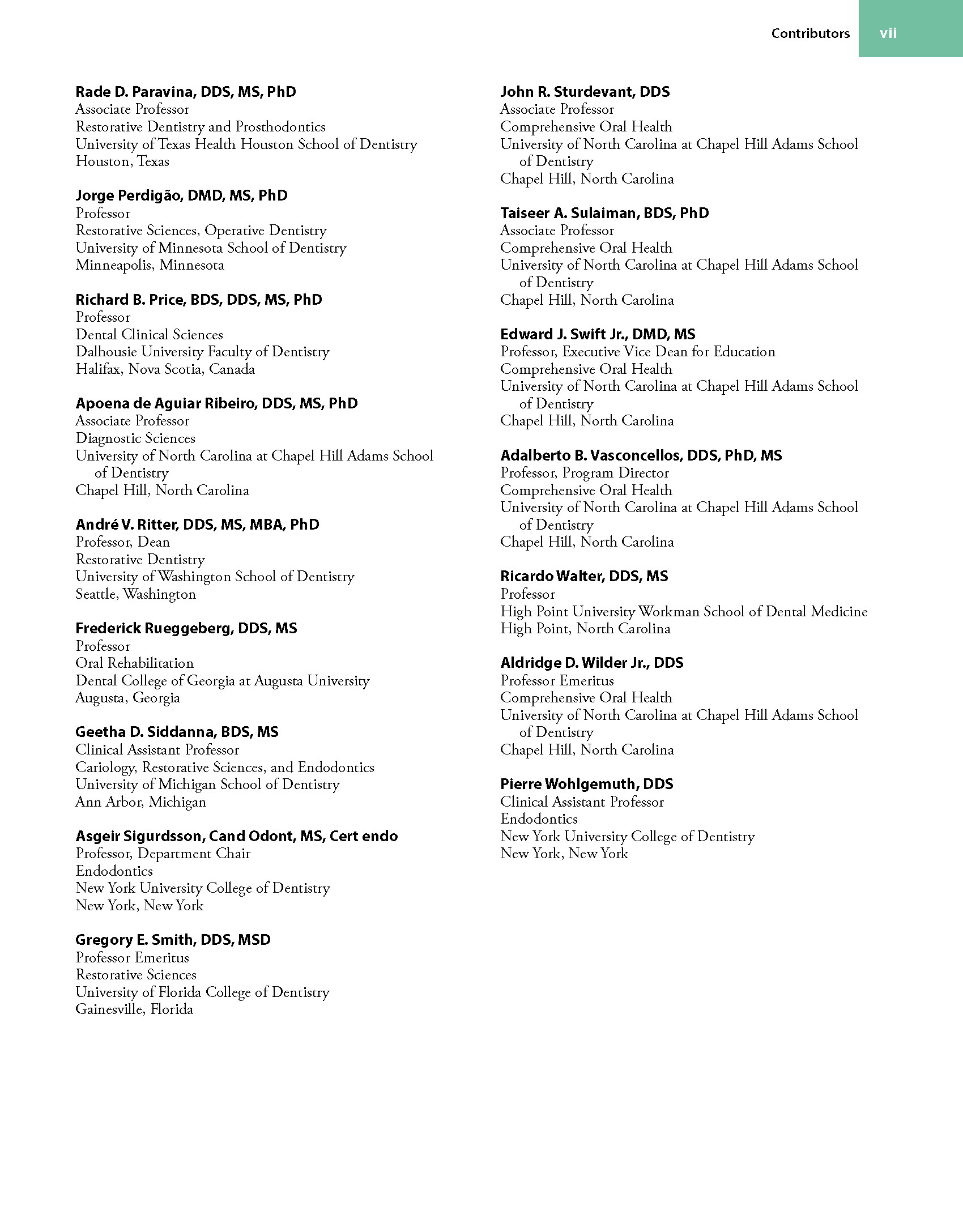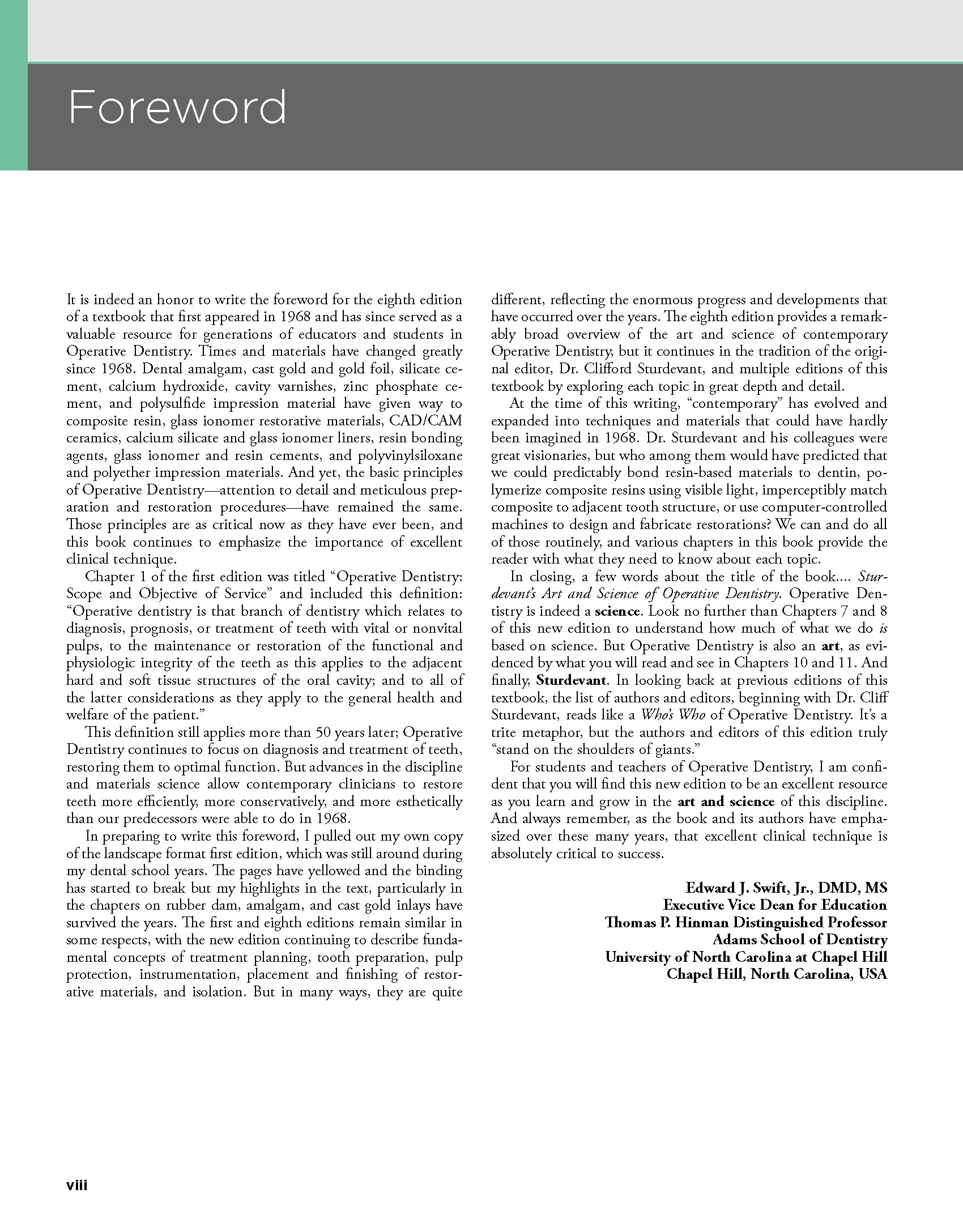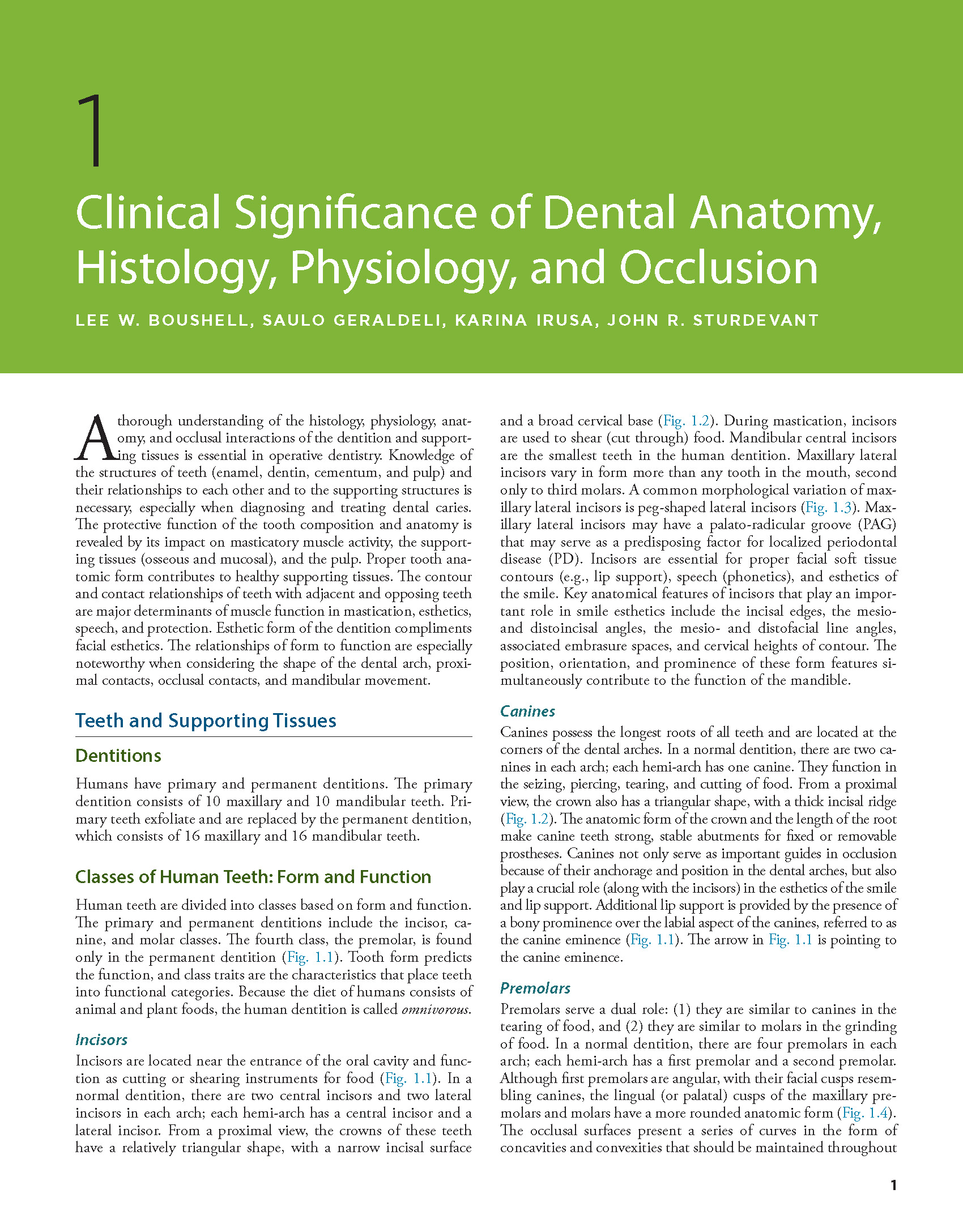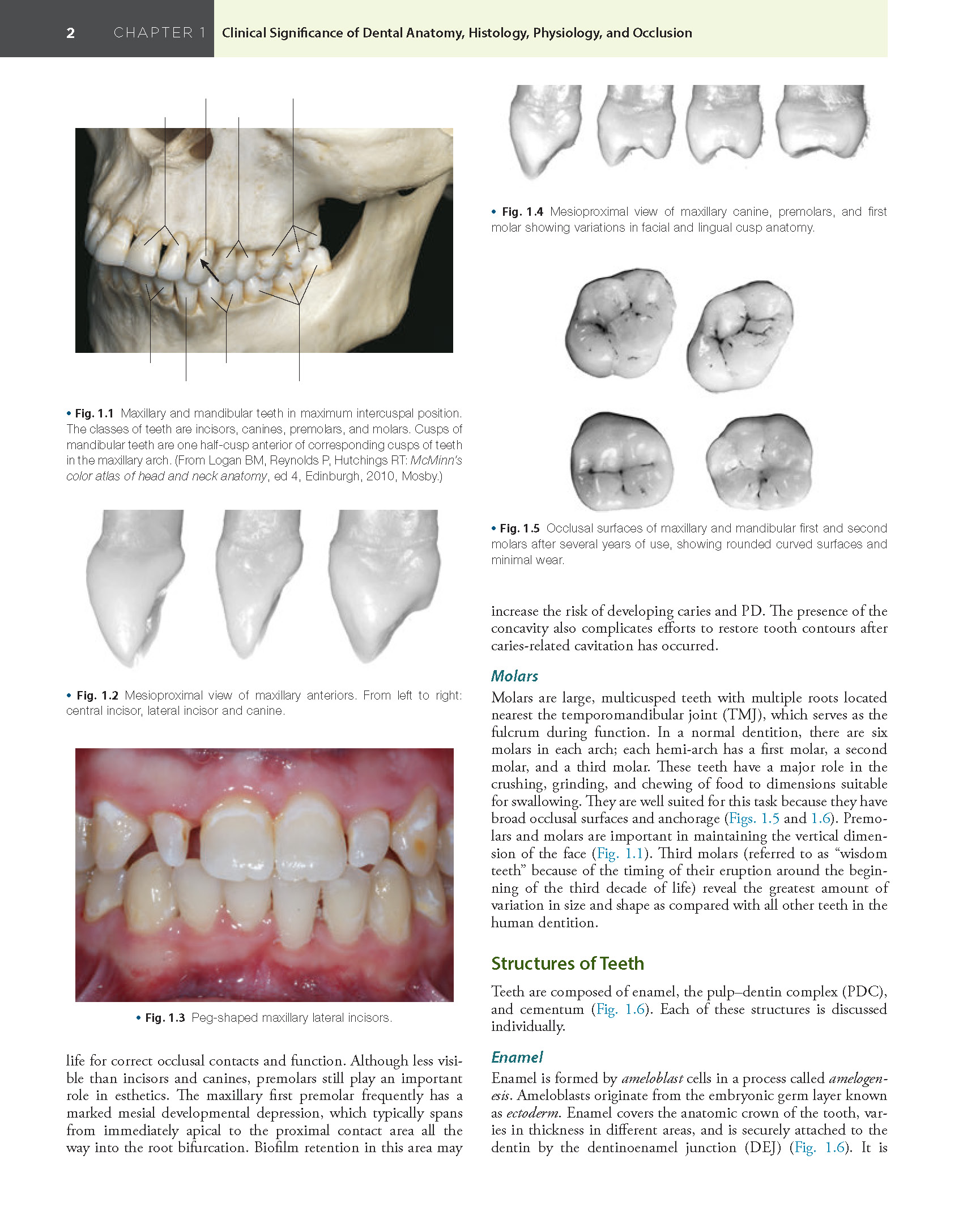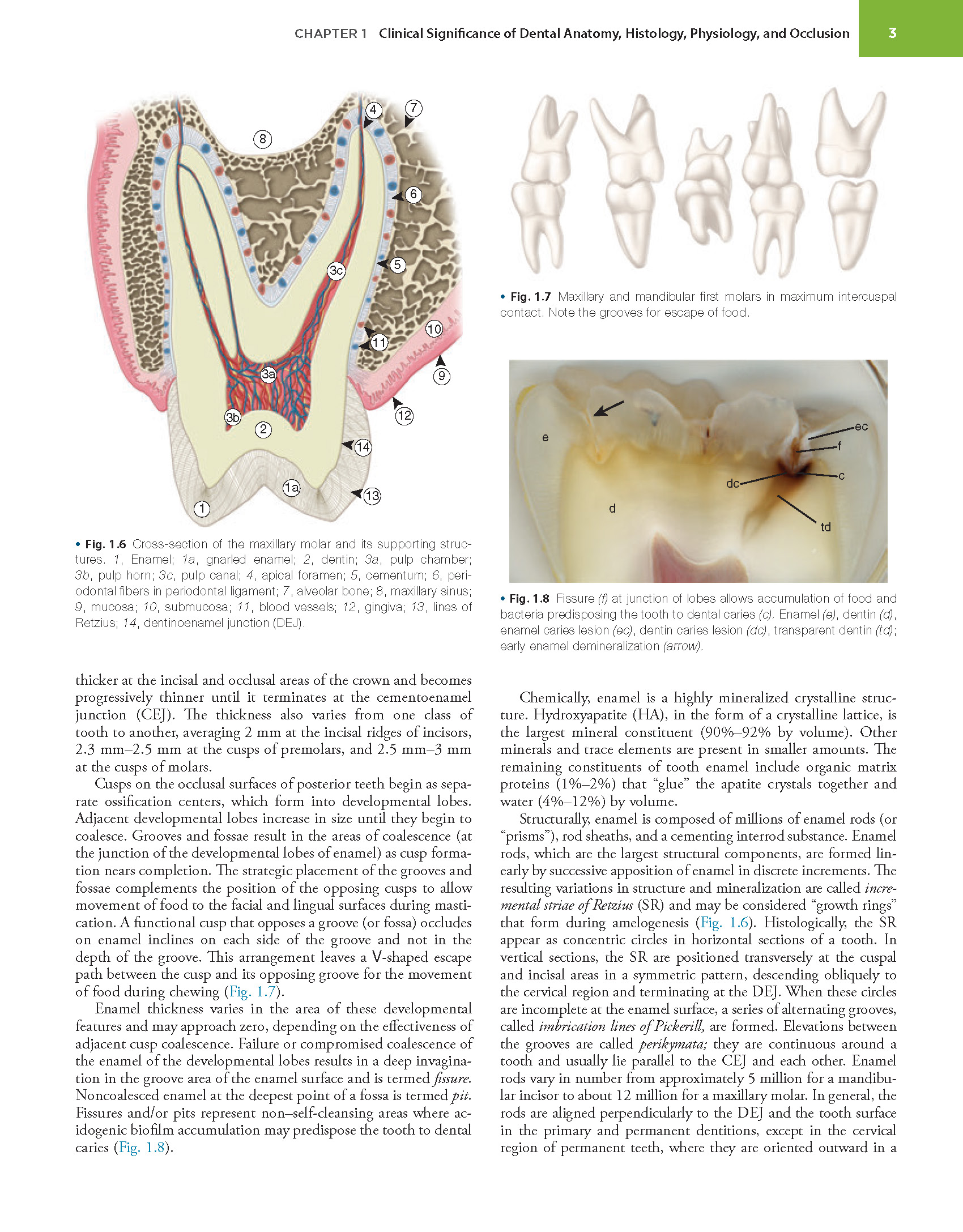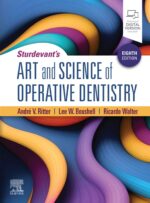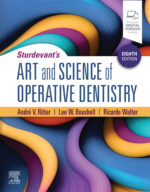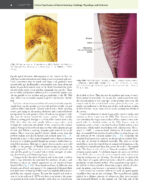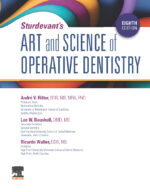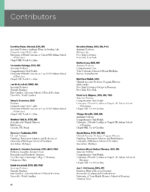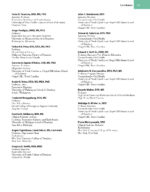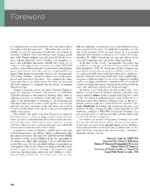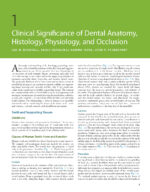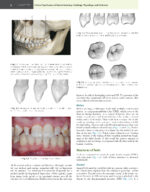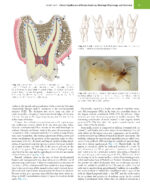-15%
Sturdevant’s ART and SCIENCE of OPERATIVE DENTISTRY + Supplemental Online Chapters (2026)
۲۸,۰۰۰,۰۰۰ ریال قیمت اصلی: ۲۸,۰۰۰,۰۰۰ ریال بود.۲۳,۸۰۰,۰۰۰ ریالقیمت فعلی: ۲۳,۸۰۰,۰۰۰ ریال.
گروه کتاب : Operative Dentistry, تازه های انگلیسی, کتاب های انگلیسی
کتاب افست “Sturdevant’s ART and SCIENCE of OPERATIVE DENTISTRY 2025” ویرایش هشتم به همراه فصول آنلاین
| Author | , , |
|---|---|
| Edition Number | |
| Copyright Year | |
| Print color | |
| Page Count | |
| Cover Type | |
| Dimensions | |
| Paper type | |
| Publishers | |
| ISBN Number | |
| Weight |
It is indeed an honor to write the foreword for the eighth edition
of a textbook that first appeared in 1968 and has since served as a
valuable resource for generations of educators and students in
Operative Dentistry. Times and materials have changed greatly
since 1968. Dental amalgam, cast gold and gold foil, silicate cement,
calcium hydroxide, cavity varnishes, zinc phosphate cement,
and polysulfide impression material have given way to
composite resin, glass ionomer restorative materials, CAD/CAM
ceramics, calcium silicate and glass ionomer liners, resin bonding
agents, glass ionomer and resin cements, and polyvinylsiloxane
and polyether impression materials. And yet, the basic principles
of Operative Dentistry—attention to detail and meticulous preparation
and restoration procedures—have remained the same.
Those principles are as critical now as they have ever been, and
this book continues to emphasize the importance of excellent
clinical technique.
Chapter 1 of the first edition was titled “Operative Dentistry:
Scope and Objective of Service” and included this definition:
“Operative dentistry is that branch of dentistry which relates to
diagnosis, prognosis, or treatment of teeth with vital or nonvital
pulps, to the maintenance or restoration of the functional and
physiologic integrity of the teeth as this applies to the adjacent
hard and soft tissue structures of the oral cavity; and to all of
the latter considerations as they apply to the general health and
welfare of the patient.”
This definition still applies more than 50 years later; Operative
Dentistry continues to focus on diagnosis and treatment of teeth,
restoring them to optimal function. But advances in the discipline
and materials science allow contemporary clinicians to restore
teeth more efficiently, more conservatively, and more esthetically
than our predecessors were able to do in 1968.
In preparing to write this foreword, I pulled out my own copy
of the landscape format first edition, which was still around during
my dental school years. The pages have yellowed and the binding
has started to break but my highlights in the text, particularly in
the chapters on rubber dam, amalgam, and cast gold inlays have
survived the years. The first and eighth editions remain similar in
some respects, with the new edition continuing to describe fundamental
concepts of treatment planning, tooth preparation, pulp
protection, instrumentation, placement and finishing of restorative
materials, and isolation. But in many ways, they are quite
different, reflecting the enormous progress and developments that
have occurred over the years. The eighth edition provides a remarkably
broad overview of the art and science of contemporary
Operative Dentistry, but it continues in the tradition of the original
editor, Dr. Clifford Sturdevant, and multiple editions of this
textbook by exploring each topic in great depth and detail.
At the time of this writing, “contemporary” has evolved and
expanded into techniques and materials that could have hardly
been imagined in 1968. Dr. Sturdevant and his colleagues were
great visionaries, but who among them would have predicted that
we could predictably bond resin-based materials to dentin, polymerize
composite resins using visible light, imperceptibly match
composite to adjacent tooth structure, or use computer-controlled
machines to design and fabricate restorations? We can and do all
of those routinely, and various chapters in this book provide the
reader with what they need to know about each topic.
In closing, a few words about the title of the book…. Sturdevant’s
Art and Science of Operative Dentistry. Operative Dentistry
is indeed a science. Look no further than Chapters 7 and 8
of this new edition to understand how much of what we do is
based on science. But Operative Dentistry is also an art, as evidenced
by what you will read and see in Chapters 10 and 11. And
finally, Sturdevant. In looking back at previous editions of this
textbook, the list of authors and editors, beginning with Dr. Cliff
Sturdevant, reads like a Who’s Who of Operative Dentistry. It’s a
trite metaphor, but the authors and editors of this edition truly
“stand on the shoulders of giants.”
For students and teachers of Operative Dentistry, I am confident
that you will find this new edition to be an excellent resource
as you learn and grow in the art and science of this discipline.
And always remember, as the book and its authors have emphasized
over these many years, that excellent clinical technique is
absolutely critical to success.
Edward J. Swift, Jr., DMD, MS
Executive Vice Dean for Education
Thomas P. Hinman Distinguished Professor
Adams School of Dentistry
University of North Carolina at Chapel Hill
Chapel Hill, North Carolina, USA


